The Antarctica Diaries – Day 7 – Neko Harbour & Danco Island
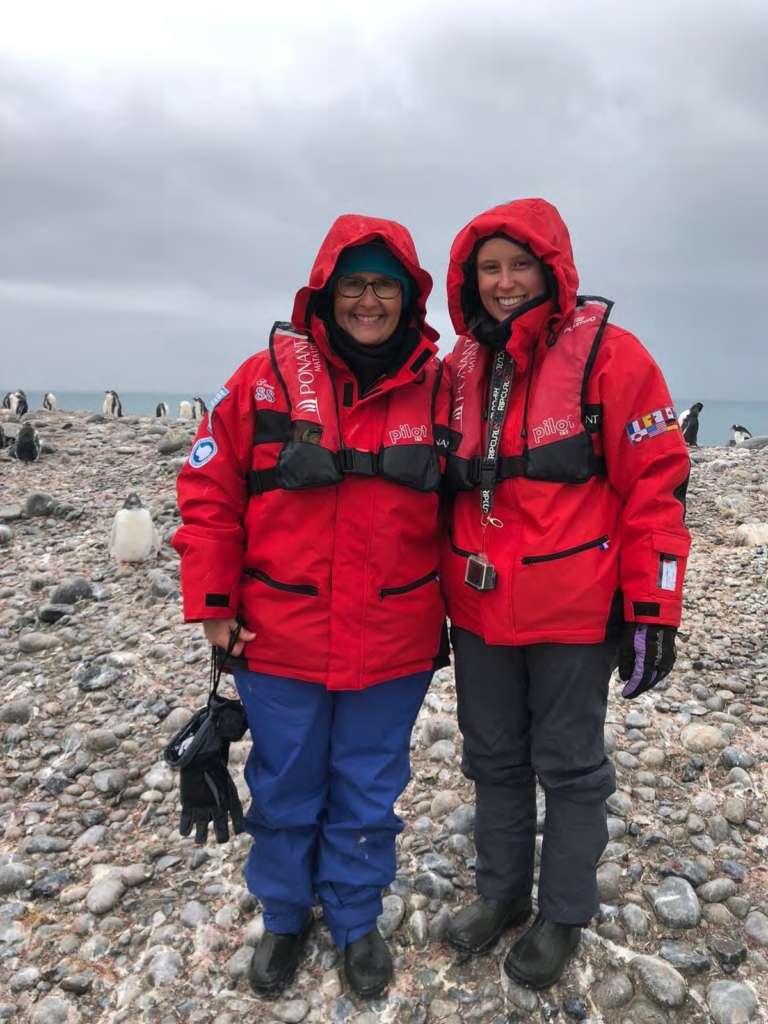
by Deb Corbett – Commercial Director Asia Pacific – Ponant Cruises
Deb Corbett is one of our favourite industry professionals. She recently returned from an expedition cruise to Antarctica with her sister Annie. Deb recounts us on her personal cruise experience in February 2020 to Antarctica aboard Ponant’s L’Austral. We will be posting each day’s journal over the next few weeks.
Saturday 15 February 2020 – NEKO HARBOUR & DANCO ISLAND
One degree today with only a wind speed of 3km/h – just glorious weather. An early rise to watch the ship navigate towards Neko Harbour. Today we are setting foot on the Antarctic Peninsula and will later receive a certificate in our cabin confirming this landing. Neko Harbour was discovered by Belgian explorer Adrien De Gerlache in the early 20th century. It was named after a Scottish whaling boat, the “Neko”, which operated in the area between 1911 and 1924. This site is a continent landing and is home to approximately 25 breeding pairs of Gentoo Penguins. One of the most striking attractions of Neko Harbour is its huge glacier, which can sometimes be seen calving ice. We have two landings today and both are glacier walks. Our second landing is on Danco Island which we cruised to after lunch by cruising through the Errera Channel.
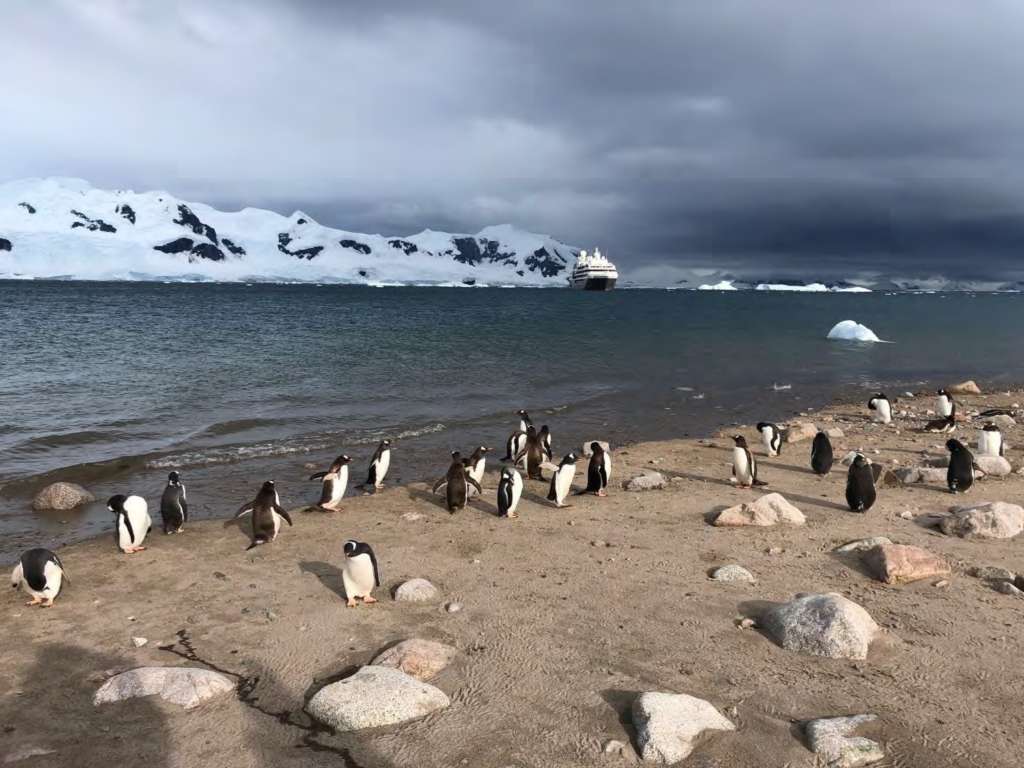
I am sitting on a rock looking at the light contrasts in front of me. It reminds me of a quote from Andrew Denton…
“If Antarctica were music, it would be Mozart. Art, and it would be Michelangelo. Literature, and it would be Shakespeare. And yet it is something even greater; the only place on earth that is still as it should be. May we never tame it”.
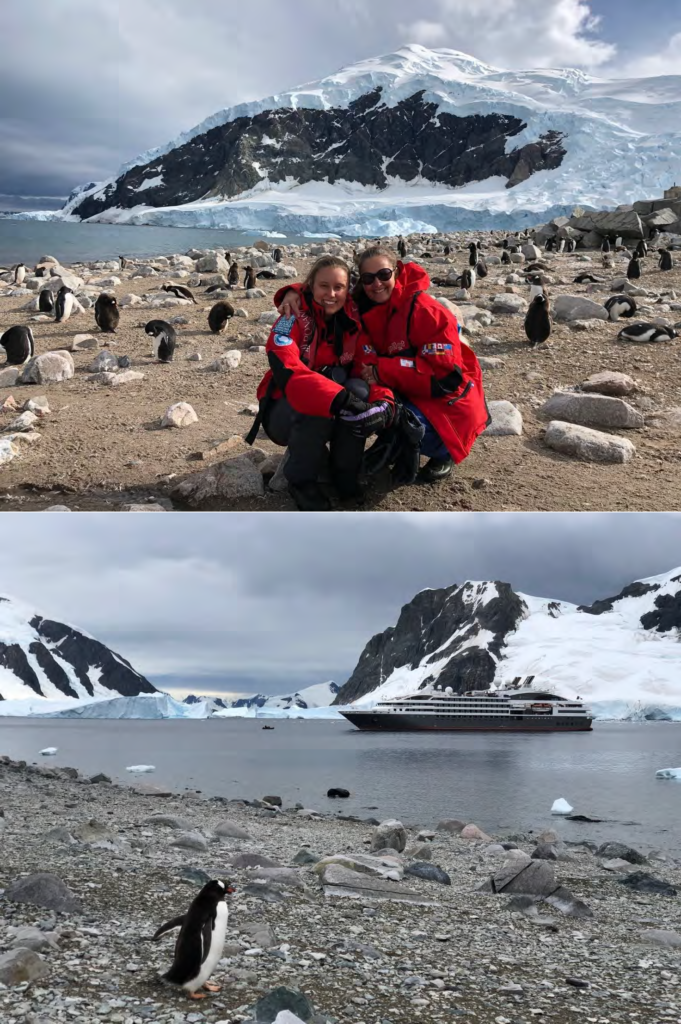
This is our farewell as we now head back to the Drake Passage onto Ushuaia – what a finale!
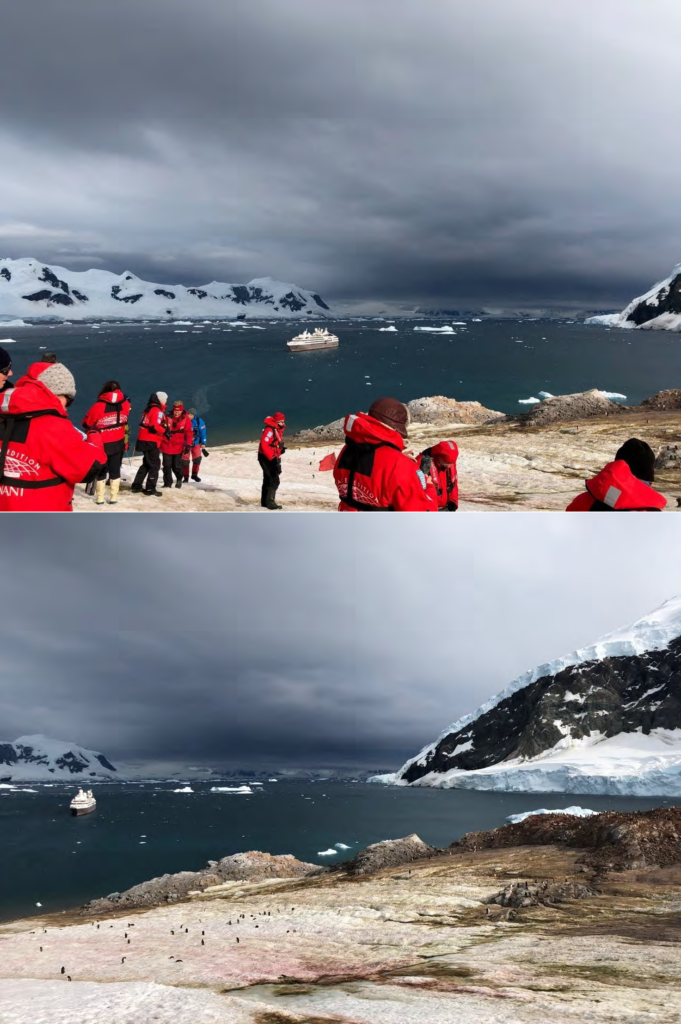
And during the past 4 days in the peninsula, there were announcements by the Captain and expedition guides alerting us to whales around the ship. We were lucky to have seen many Humpback Whales which is one of the largest animals on earth, growing to lengths of more than 16m and weights of 40 tonne. The scientists saw them “bubble-feeding” which is when the whales release rings of bubbles at depth to capture schools of small fish and then surface mouth-open in the centre of the ring. Cooperative “bubble-netting” also occurs with multiple whales all releasing bubbles and surfacing together. The scientists were extremely excited about this and recorded lots of data. They showed us in a lecture what they saw as they had permission from the Antarctic association authorities to use a drone as part of their research. Here is a drone shot of the “bubble feeding” shown to us in their theatre presentation.
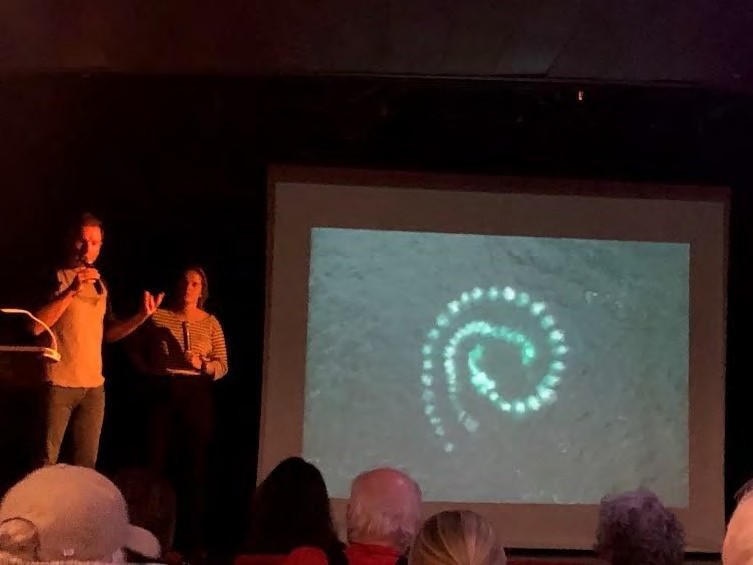
Stay tuned for next week’s installment: Day 8 & 9 – Caviar, Cape Horn & Harberton

